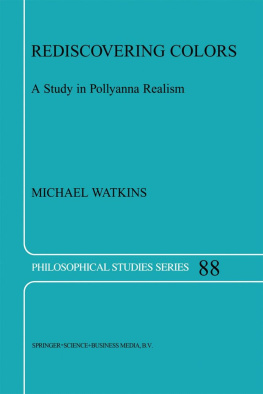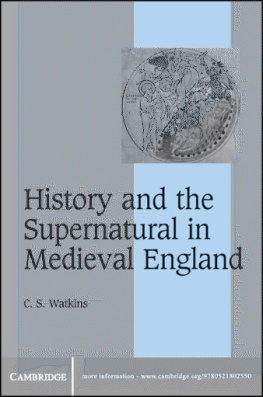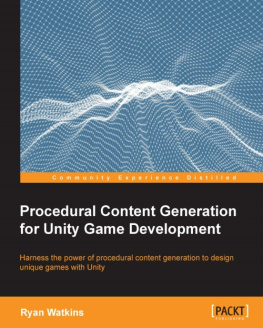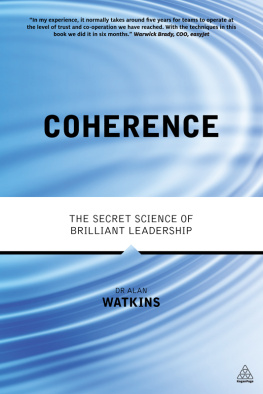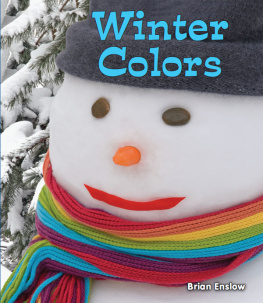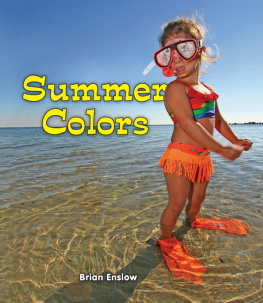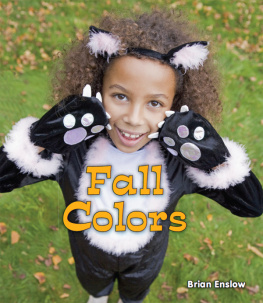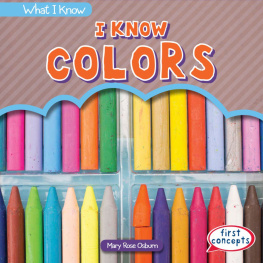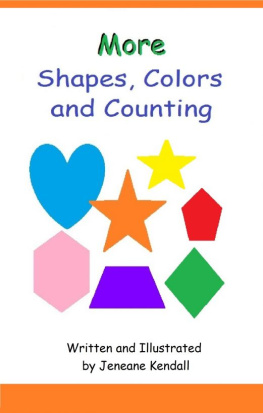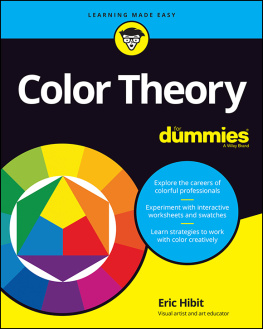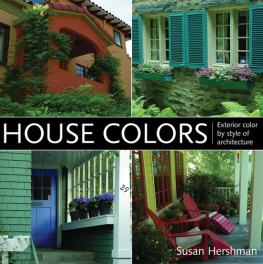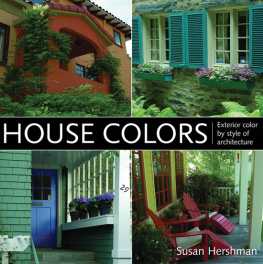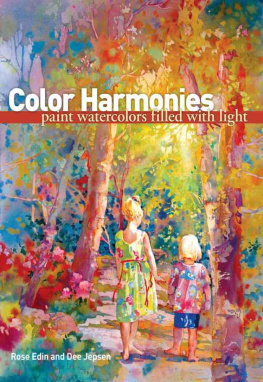Colour, colorI.1. The quality in virtue of which objects present different appearances to the eye, in respect of the kind of light, reflected from their surfaces.
Oxford Universal English Dictionary (1937)
Color 1. The sensation resulting from stimulation of the retina of the eye by light waves of certain lengths.
Webster s Second College Edition (1980)
Color 1. That aspect of things that is caused by differing qualities of the light reflected or emitted by them.
The American Heritage Dictionary,
Second College Edition (1985)
This is not a study in cognitive science. This is a study in metaphysics. Cognitive science is mostly beside the point. Indeed, science is mostly beside the point. Thats one secret, subversive message of this book: science has little to tell us about what colors are. I can hear the boos as well as the cheers prompted by this claim, and I appreciate the feelings expressed by both. So I should also tell you that this is not yet another defense of Cartesianism, dualism, or mysticism. I have no sympathy for the unnatural, though that will not be obvious for some time. Indeed, it will seem exactly the opposite for, though he receives no discussion in the following pages, I will advance a view of colors largely in sympathy with G.E. Moores: colors are simple, first-order, intrinsic properties of objects; they cannot be reduced to any other properties. However, I do not think that this claim threatens any naturalism worth saving. Indeed, it is fair to think of my project as an attempt to be a Moorean while escaping the mystery that Moore could never quite escape. Pollyanna Realism is Moorean Realism without the mystery, naive realism without the naivet.
Pollyanna Realism employs two insights, both borrowed. The first insight, defended by Gareth Evans (1985), John McDowell (1985), and David Wiggins (1987), is that relationally (or even subjectively) specifying what a property is does not entail that that property is a relational (or subjective) property. Identifying conditions are one thing; identity conditions another. I take this claim to be true on its face, though I will argue for it nonetheless. (See especially .) The causal powers contributed by properties are not, as Hume supposed, contributed contingently.
Together, these two insights provide a powerful metaphysical tool. The first allows us to specify what a property is by the causal powers it contributes without treating that property as a relational property. And so it allows us to identify colors by their effects on us while insisting that the colors are objective properties of objects. The second allows the specification of a property by appeal to its causal features to do metaphysical work. It allows us to say what a propertys essential nature is by appeal to the causal powers it contributes. Putting these ideas together, I argue that what is essential to a color its nature is that it contributes to anything having it the power to look a particular color under the appropriate conditions. An objects color is not some relational or modal feature of that object, so the account I forward is not reductive. But colors have their causal features essentially, so to know what their causal features are is to know their natures.
Colors, I maintain, are properties of objects that are typically causally responsible for color experiences. But, I also insist, colors cannot be reduced to some other property or properties. Specifically, they can neither be reduced to the properties of interest to science nor to certain relational or modal features of objects. But if colors are causally efficacious and nonreducible, then it seems that either we lose the causal closure of the physical this will happen if colors are responsible for some events that physical properties are not responsible for or we allow for causal overdetermination this will apparently happen if colors and physical properties are responsible for the same events. I argue, however, that colors noncompetively contribute a subset of those causal powers contributed by the physical properties that presumably realize them. In other words, although colors make causal contributions, they make no contributions not made by certain physical properties. If I am right, then there is no threat of causal overdetermination, or at least no causal overdetermination that need worry us. Rather than allowing for two causal chains, we recognize that colors and their physical realizers (noncompetively) play the same role in a single causal chain. is devoted to developing the idea of noncompetive causes.
So heres a sketch of the position I will defend: first, we identify a color by appeal to the causal powers it necessarily contributes to anything having it; second, the causal power that a color necessarily contributes to anything having it is the power to look colored; third, colors are intrinsic features of objects an objects color is not some relational or modal feature of that object; and fourth, since those powers are necessarily contributed by colors, to know what those powers are is to know the nature the essence of colors.
What I am arguing for, then, is a return to what might be thought a central insight of Aristotelian metaphysics. For Aristotle, if we know somethings causal features, then we know its nature. We know the thing (in) itself. After Hume (and probably before), just how we know somethings nature seems much harder. Indeed, it might even seem impossible. If somethings nature is disconnected from what it does, then we face a metaphysical chasm. Everything we know about a thing will seem to leave out the thing (in) itself. Indeed, the appeal of phenomenalism is just its promise to close that chasm. But the cost of phenomenalism is that we win a world only by losing the world. The alternative to phenomenalism seems to be that we treat somethings nature as merely accidentally related to what it does, and this view is nearly as costly since it would seem that we can only be acquainted with a things effects on us. As Simon Blackburn puts that alternative, it seems that we can head toward the engine room, perhaps, but never get there (1991: 196). Pollyanna Realism insists, against both post-Humean alternatives, that the engine room is quite easy to access. Weve been there all along. We rediscover colors, then, by recognizing how we know what weve always known.

